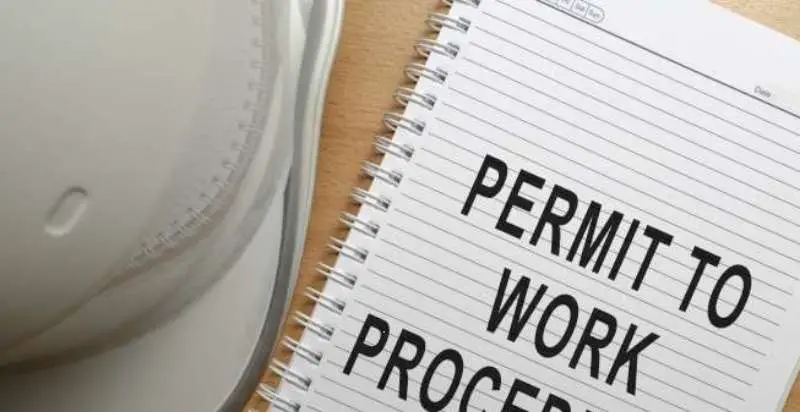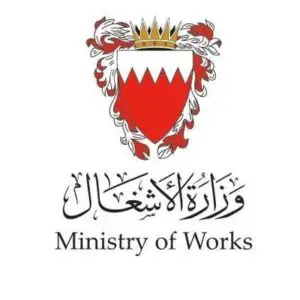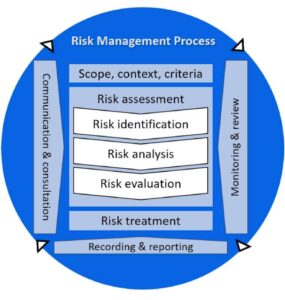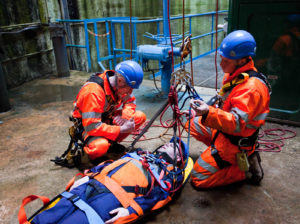What is a permit to work

What is a permit to work? a permit to work is a name for a binding resource that contains a precise, recorded description of work methods, activities, and work that a permit holder may and may not perform at a certain workplace so that efficiency and safety at the workplace are guaranteed as well as possible. Briefly summarized, a permit contains information about:
which person,
under specified circumstances,
in a certain period,
clearly defined activities,
may perform under clearly defined conditions.
In practice, there are various types of work permits. This article will provide information about the purpose why we take work permits, the application, the concepts of permit issuer and permit holder, instruction on the work permit, the content, components and various types of work permits.
What is the purpose of work permits?
The description above shows that the ultimate goal is to guarantee the safety of the workers. The main purpose of the work permit is therefore also to promote safety in the workplace. This goal can be achieved in a number of ways with the work permit. The following aspects of a work permit can ensure that the main objective can be achieved:
• The business rules must be implemented and recorded step by step.
• The responsibilities must be clearly defined.
• Clearly record under which circumstances work may be performed.
• Description in the form of a clear explanation of working methods and activities.
The work permit must be drawn up carefully so that employees who comply with the work permit cannot cause danger or damage to people, the environment, installations, machines, tools, buildings, and structures.
Where are work permits used?
Work permits are generally included in procedures of the companies with an increased safety risk. In an office environment, people will not work quickly with work permits, but at petrochemical companies, a work permit is a well-known concept. For risky work or work on installations that can pose a risk to people and the environment, work permits are made to clearly indicate what an employee can and cannot do. Clients can demand a work permit. However, it is not legally required to use work permits. For that reason, work permits are not used everywhere. In practice, work permits are often used for work at or at power plants, gas extraction installations, oil companies, and companies in the chemical industry and construction companies.
Permit receiver
The installation expert will act as the permitted provider and the implementation expert is the permit holder or permit receiver. People also talk about the issuer of the work permit and the holder of the work permit. For clarification, the provider is the supervisory department and the holder of the permit is the company or person who will actually perform the work. The permit contains clear agreements and conditions that must ensure that the work is carried out safely. A PTW contains binding agreements between the permit issuer and the permit holder and contains a checklist of safety points that the permit holder must comply with.
Instruction about the work permits
Employees who have to deal with work permits in practice will have to follow instructions for this. They must know the importance of the work permit and why it has been drawn up. Safety is largely about awareness. Unsafe actions are one of the biggest causes of accidents. Employees should, therefore, be advised of the importance of complying with safety rules. The PTW also contains rules and agreements that promote safety. That is why the PTW is not a symbolic document but an important document that provides frameworks within which an employee can and may perform his or her work.
Content of the PTW
The PTW contains information about which measures must be taken before starting work. These measures are precautionary measures and may be related to registering on-site with a specific person.
In addition, there is information that must be used during the execution of the work. This states what a PTW holder can and cannot do in the workplace. It is also indicated at which location the work must be carried out. Most work permits the competence of certain officials to issue work permits.
What does a PTW consist of?
Work permits, as mentioned earlier, are not a legal obligation. That is why it is not legally prescribed how a PTWt should be structured and what the content of a PTW should be. That is why in this paragraph we use the construction of a standard PTW,
• The request for the work, which states exactly which tasks and work is involved. This part can also contain a Task Risk Analysis (TRA).
• The measures to be taken by the issuer of the PTW – this is the supervisory department that in practice is the permit issuer or permit issuer. These measures are related to creating a workplace that is as safe as possible for employees (including license holders).
• The measures to be taken by the permit holder. This is the company or employee who will actually perform the work. This section describes the tasks that the permit holder has.
• The ratification of the PTW. This is done by the licensing authority. With the ratification, the validity of the PTW is made clear. The duties of the issuer with regard to checking compliance with the precautionary measures and the daily release of the PTW permit in the case of unchanged circumstances are also part of the authorization of the PTW
Different types of work permits
Different types of work permits can be applied for and issued in practice. The difference in work permits has to do, among other things, with specific risks. For example, work permits can be issued for:
carrying out excavation work (near gas pipes).
Work inside confined space,
Hot work Activities
Work at height,
Gas release
Electrical or mechanical maintenance
Work near sea or water
work on high power lines etc
you can check our article at confined space definition and dangers. There are also work permits that are specifically issued to employees and companies that carry out work processes that release a lot of heat. One can think of the TIG welding of pipes. A licensing authority can issue a specific hot PTW for this.
Additional work permits
A PTW can also contain an additional work permit. A licensing authority can draw up a supplementary work permit if extra risky work must also be carried out in a certain risky work area. This is the case, for example, when employees have to work at high altitudes in a risky environment or in confined spaces. A specific work permit may also be required for specific excavation work in the vicinity of pipelines utilities or services through which gas or oil is transported or electricity or communication cables are passes. See also this How safety officers can save themselves from the court in case of an accident
You can download sample PTW by clicking below






